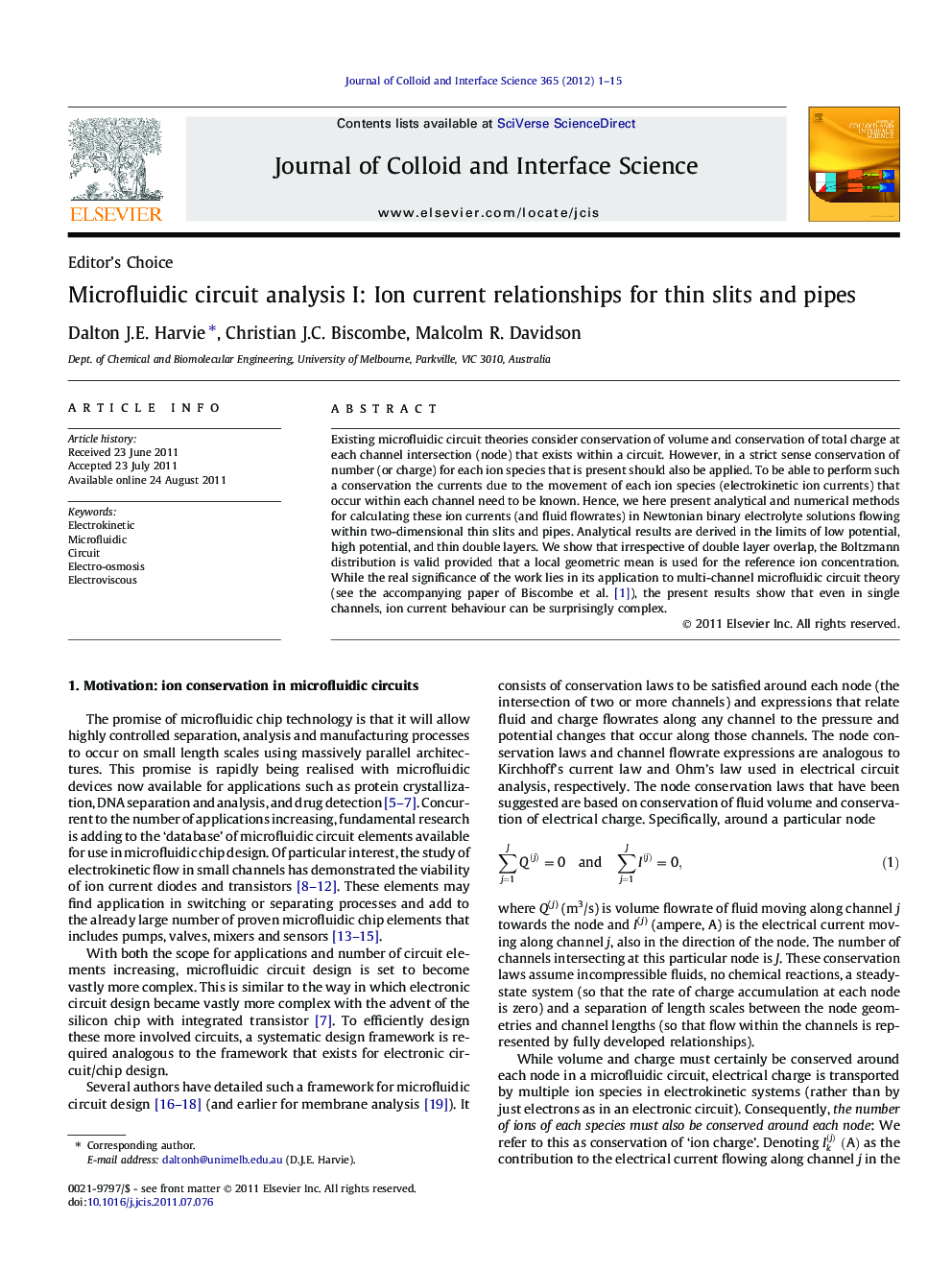| Article ID | Journal | Published Year | Pages | File Type |
|---|---|---|---|---|
| 608443 | Journal of Colloid and Interface Science | 2012 | 15 Pages |
Existing microfluidic circuit theories consider conservation of volume and conservation of total charge at each channel intersection (node) that exists within a circuit. However, in a strict sense conservation of number (or charge) for each ion species that is present should also be applied. To be able to perform such a conservation the currents due to the movement of each ion species (electrokinetic ion currents) that occur within each channel need to be known. Hence, we here present analytical and numerical methods for calculating these ion currents (and fluid flowrates) in Newtonian binary electrolyte solutions flowing within two-dimensional thin slits and pipes. Analytical results are derived in the limits of low potential, high potential, and thin double layers. We show that irrespective of double layer overlap, the Boltzmann distribution is valid provided that a local geometric mean is used for the reference ion concentration. While the real significance of the work lies in its application to multi-channel microfluidic circuit theory (see the accompanying paper of Biscombe et al. [1]), the present results show that even in single channels, ion current behaviour can be surprisingly complex.
Graphical abstractMotivated by the requirements of volume and ion conservation in electrokinetic circuits, analytical and numerical methods for calculating the flowrate and ion currents in two dimensional microfluidic channels are developed.Figure optionsDownload full-size imageDownload high-quality image (69 K)Download as PowerPoint slideHighlights► Conservation of ion charge is required in electrokinetic circuits. ► Ion concentration is well represented by a local geometric mean in binary systems. ► This mean is uniform within a single channel when the flow is fully developed. ► The Boltzmann distribution is valid irrespective of double layer overlap. ► Ion current (and flowrate) expressions are derived for thin slits and pipes.
